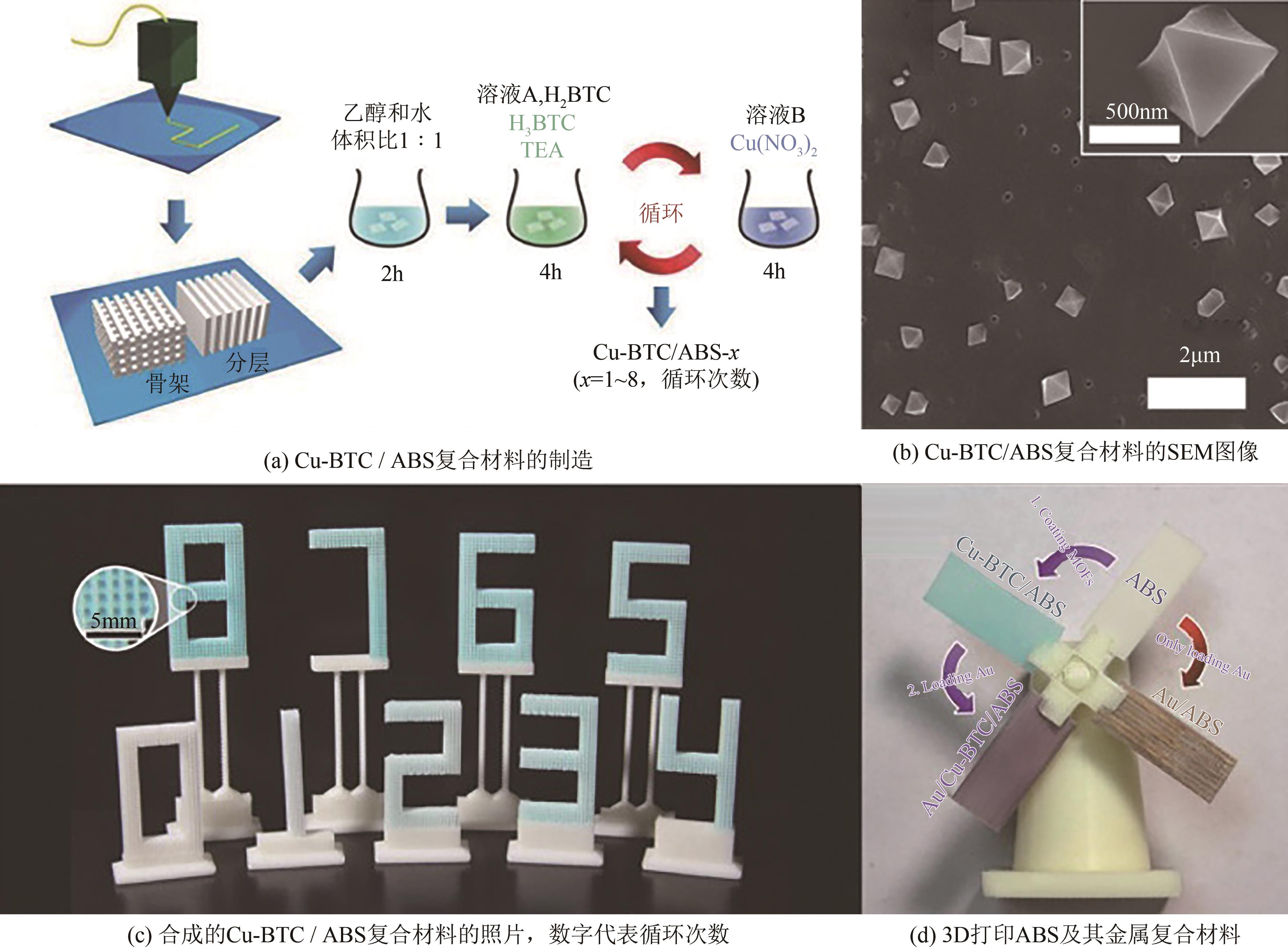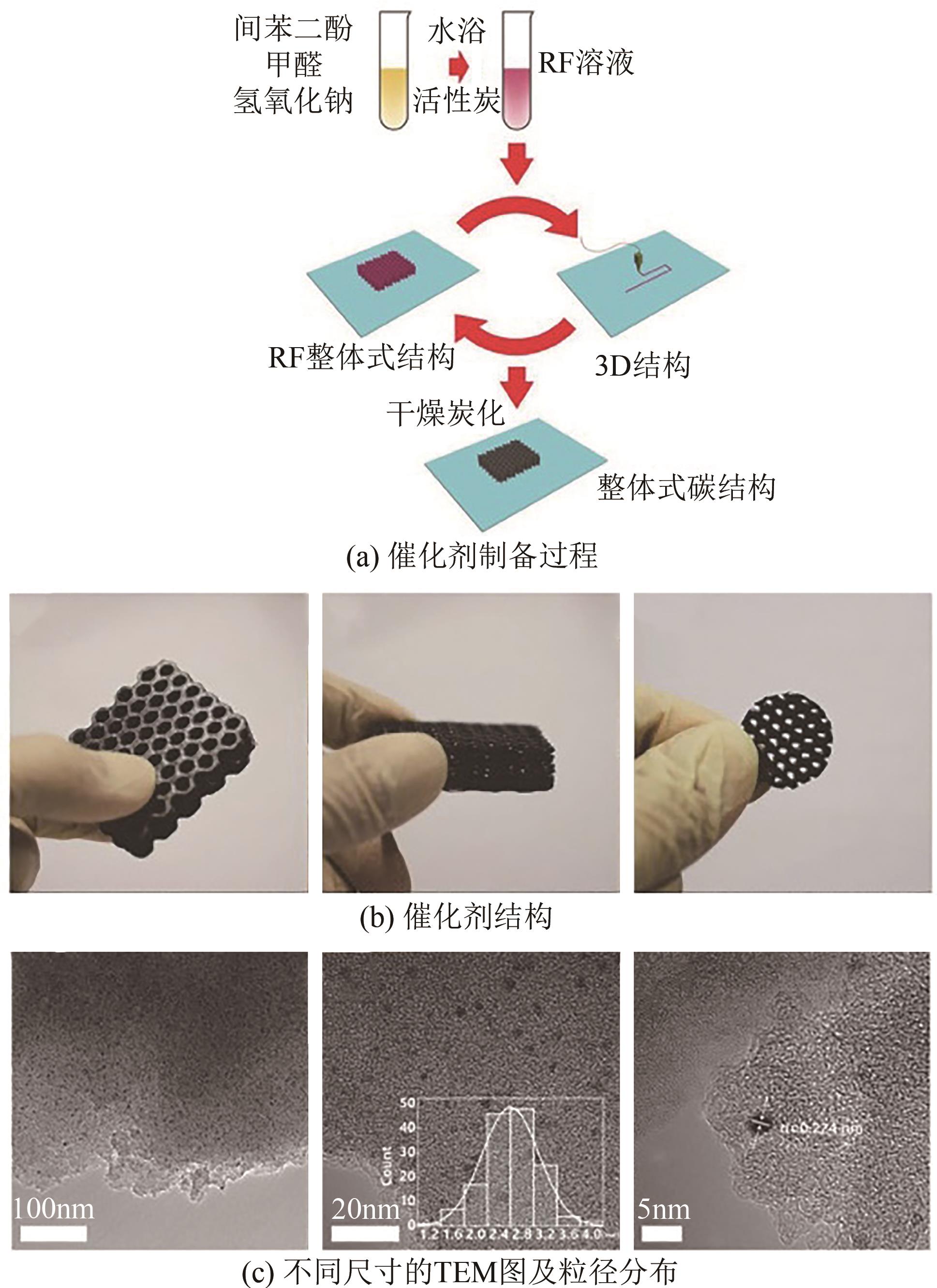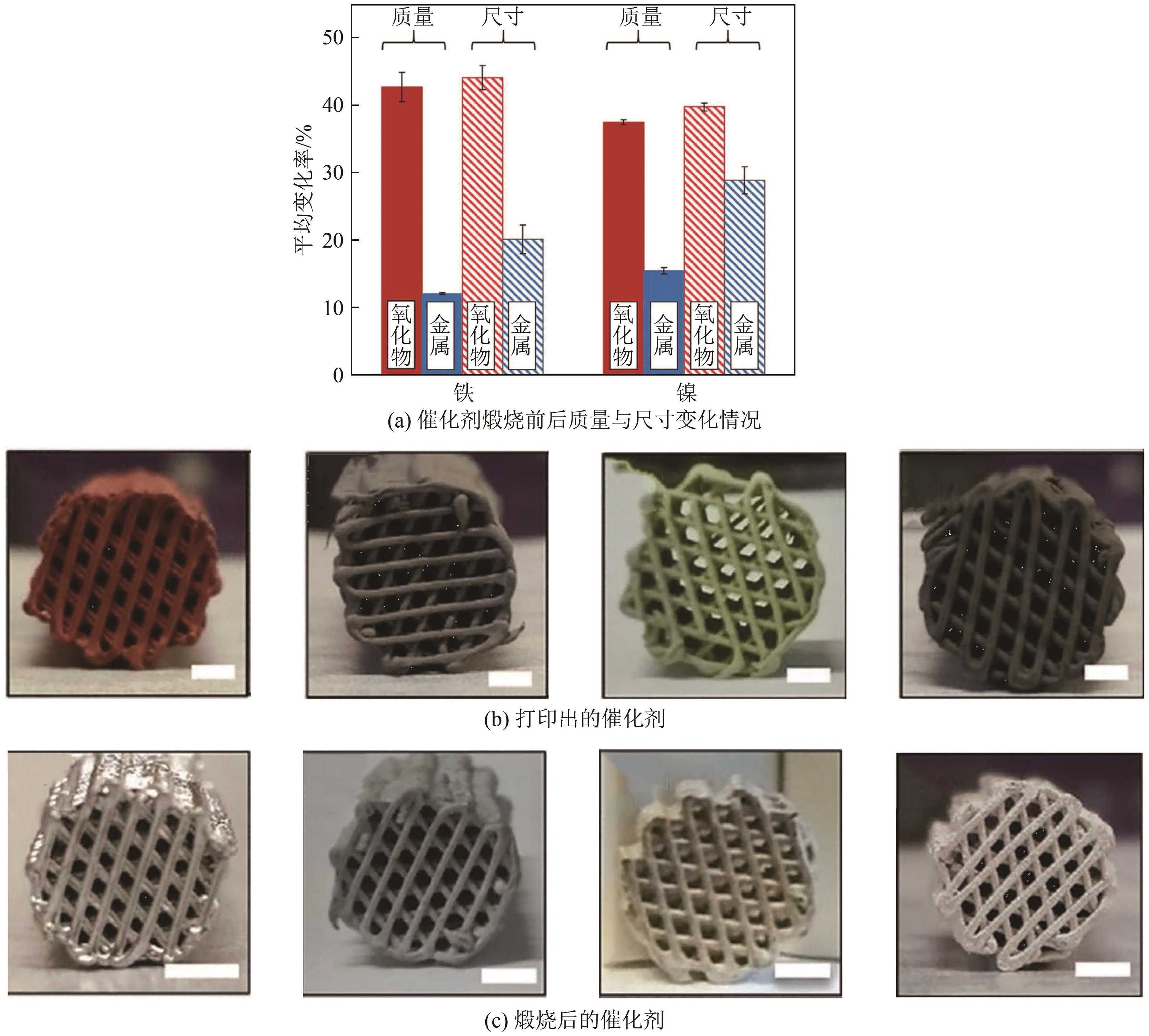| 1 |
YUAN Zijian, LIU Lu, RU Wei, et al. 3D printed hierarchical spinel monolithic catalysts for highly efficient semi-hydrogenation of acetylene[J]. Nano Research, 2022, 15(7): 6010-6018.
|
| 2 |
CENTI Gabriele, PERATHONER Siglinda. Novel catalyst design for multiphase reactions[J]. Catalysis Today, 2003, 79/80: 3-13.
|
| 3 |
ZHU Jie, WU Peiwen, CHAO Yanhong, et al. Recent advances in 3D printing for catalytic applications[J]. Chemical Engineering Journal, 2022, 433: 134341.
|
| 4 |
ROBBINS Spencer W, Sai Hiroaki, DISALVO Francis J, et al. Monolithic gyroidal mesoporous mixed titanium-niobium nitrides[J]. ACS Nano, 2014, 8(8): 8217-8223.
|
| 5 |
SUN Fang, Jean-Rene ELLA-MENYE, GALVAN Daniel David, et al. Stealth surface modification of surface-enhanced Raman scattering substrates for sensitive and accurate detection in protein solutions[J]. ACS Nano, 2015, 9(3): 2668-2676.
|
| 6 |
GU Zhanjun, Parans PARANTHAMAN M, XU Jun, et al. Aligned ZnO nanorod arrays grown directly on zinc foils and zinc spheres by a low-temperature oxidization method[J]. ACS Nano, 2009, 3(2): 273-278.
|
| 7 |
Jessica CAMPOS-DELGADO, ROMO-HERRERA José Manuel, JIA Xiaoting, et al. Bulk production of a new form of sp2 carbon: Crystalline graphene nanoribbons[J]. Nano Letters, 2008, 8(9): 2773-2778.
|
| 8 |
LI Zuojiang, DEL CUL Guillermo D, YAN Wenfu, et al. Fluorinated carbon with ordered mesoporous structure[J]. Journal of the American Chemical Society, 2004, 126(40): 12782-12783.
|
| 9 |
ZHOU Xintong, ZHANG Quan, LIU Changjun. Templated synthesis of urchin-like zinc oxide particles by micro-combustion[J]. Frontiers of Chemical Science and Engineering, 2014, 8(1): 73-78.
|
| 10 |
CHAI Geun Seok, YOON Suk Bon, YU Jong-Sung, et al. Ordered porous carbons with tunable pore sizes as catalyst supports in direct methanol fuel cell[J]. The Journal of Physical Chemistry B, 2004, 108(22): 7074-7079.
|
| 11 |
王雪莹. 3D打印技术与产业的发展及前景分析[J]. 中国高新技术企业, 2012(26): 3-5.
|
|
WANG Xueying. Development and prospect analysis of 3D printing technology and industry[J]. China High-Tech Enterprises, 2012(26): 3-5.
|
| 12 |
Cesar PARRA-CABRERA, ACHILLE Clement, KUHN Simon, et al. 3D printing in chemical engineering and catalytic technology: Structured catalysts, mixers and reactors[J]. Chemical Society Reviews, 2018, 47(1): 209-230.
|
| 13 |
HALDORAI Yuvaraj, SHIM Jae-Jin. Fabrication of metal oxide-polymer hybrid nanocomposites[J]. Organic-Inorganic Hybrid Nanomaterials, 2015, 267: 249-281.
|
| 14 |
WENDEL Bettina, RIETZEL Dominik, Florian KÜHNLEIN, et al. Additive processing of polymers[J]. Macromolecular Materials and Engineering, 2008, 293(10): 799-809.
|
| 15 |
CRIVELLO James V, REICHMANIS Elsa. Photopolymer materials and processes for advanced technologies[J]. Chemistry of Materials, 2014, 26(1): 533-548.
|
| 16 |
LAM C X F, MO X M, TEOH S H, et al. Scaffold development using 3D printing with a starch-based polymer[J]. Materials Science and Engineering: C, 2002, 20(1/2): 49-56.
|
| 17 |
KOEGLER Wendy S, GRIFFITH Linda G. Osteoblast response to PLGA tissue engineering scaffolds with PEO modified surface chemistries and demonstration of patterned cell response[J]. Biomaterials, 2004, 25(14): 2819-2830.
|
| 18 |
TAY B Y, ZHANG S X, MYINT M H, et al. Processing of polycaprolactone porous structure for scaffold development[J]. Journal of Materials Processing Technology, 2007, 182(1/2/3): 117-121.
|
| 19 |
PENG Zhonghua. Rational synthesis of covalently bonded organic-inorganic hybrids[J]. Angewandte Chemie International Edition, 2004, 43(8): 930-935.
|
| 20 |
HONG J I, WINBERG P, SCHADLER L S, et al. Dielectric properties of zinc oxide/low density polyethylene nanocomposites[J]. Materials Letters, 2005, 59(4): 473-476.
|
| 21 |
LEE Jinhong, Kyung-Hee KO, PARK Byung-Ok. Electrical and optical properties of ZnO transparent conducting films by the sol-gel method[J]. Journal of Crystal Growth, 2003, 247(1/2): 119-125.
|
| 22 |
ZOU Hua, WU Shishan, SHEN Jian. Polymer/silica nanocomposites: Preparation, characterization, properties, and applications[J]. Chemical Reviews, 2008, 108(9): 3893-3957
|
| 23 |
DEMIR Mustafa M, CASTIGNOLLES Patrice, Ümit AKBEY, et al. In-situ bulk polymerization of dilute particle/MMA dispersions[J]. Macromolecules, 2007, 40(12): 4190-4198.
|
| 24 |
KAHN M L, MONGE M, COLLIÈRE V, et al. Size- and shape-control of crystalline zinc oxide nanoparticles: A new organometallic synthetic method[J]. Advanced Functional Materials, 2005, 15(3): 458-468.
|
| 25 |
MIYAUCHI Masahiro, LI Yongjin, SHIMIZU Hiroshi. Enhanced degradation in nanocomposites of TiO2 and biodegradable polymer[J]. Environmental Science & Technology, 2008, 42(12): 4551-4554.
|
| 26 |
YUNG Winco K C, SUN Bo, HUANG Junfeng, et al. Photochemical copper coating on 3D printed thermoplastics[J]. Scientific Reports, 2016, 6: 31188.
|
| 27 |
SHI Zhennan, XU Chen, CHEN Fei, et al. Renewable metal-organic-frameworks-coated 3D printing film for removal of malachite green[J]. RSC Advances, 2017, 7(79): 49947-49952.
|
| 28 |
CASTLES F, ISAKOV D, LUI A, et al. Microwave dielectric characterisation of 3D-printed BaTiO3/ABS polymer composites[J]. Scientific Reports, 2016, 6: 22714.
|
| 29 |
SKORSKI Matthew R, ESENTHER Jake M, AHMED Zeeshan, et al. The chemical, mechanical, and physical properties of 3D printed materials composed of TiO2-ABS nanocomposites[J]. Science and Technology of Advanced Materials, 2016, 17(1): 89-97.
|
| 30 |
FANTINO Erika, CHIAPPONE Annalisa, ROPPOLO Ignazio, et al. 3D printing of conductive complex structures with in situ generation of silver nanoparticles[J]. Advanced Materials, 2016, 28(19): 3712-3717.
|
| 31 |
MICHORCZYK P, HĘDRZAK E, WĘGRZYNIAK A. Preparation of monolithic catalysts using 3D printed templates for oxidative coupling of methane[J]. Journal of Materials Chemistry A, 2016, 4(48): 18753-18756.
|
| 32 |
LIANG Chengdu, XIE Hong, SCHWARTZ Viviane, et al. Open-cage fullerene-like graphitic carbons as catalysts for oxidative dehydrogenation of isobutane[J]. Journal of the American Chemical Society, 2009, 131(22): 7735-7741.
|
| 33 |
Kyoung-Su HA, KWAK Geunjae, Ki-Won JUN, et al. Ordered mesoporous carbon nanochannel reactors for high-performance Fischer-Tropsch synthesis[J]. Chemical Communications, 2013, 49(45): 5141-5143.
|
| 34 |
MIDDELKOOP Vesna, SLATER Thomas, FLOREA Mihaela, et al. Next frontiers in cleaner synthesis: 3D printed graphene-supported CeZrLa mixed-oxide nanocatalyst for CO2 utilisation and direct propylene carbonate production[J]. Journal of Cleaner Production, 2019, 214: 606-614.
|
| 35 |
WANG Zongyuan, LIU Changjun. Preparation and application of iron oxide/graphene based composites for electrochemical energy storage and energy conversion devices: Current status and perspective[J]. Nano Energy, 2015, 11: 277-293.
|
| 36 |
ZHOU Xintong, LIU Changjun. Three-dimensional printing for catalytic applications: Current status and perspectives[J]. Advanced Functional Materials, 2017, 27(30): 1701134.
|
| 37 |
MORENO-CASTILLA C, MALDONADO-HÓDAR F J. Carbon aerogels for catalysis applications: An overview[J]. Carbon, 2005, 43(3): 455-465.
|
| 38 |
ZHU Cheng, LIU Tianyu, QIAN Fang, et al. Supercapacitors based on three-dimensional hierarchical graphene aerogels with periodic macropores[J]. Nano Letters, 2016, 16(6): 3448-3456.
|
| 39 |
RAMBO Carlos R, TRAVITZKY Nahum, GREIL Peter. Conductive TiC/Ti-Cu/C composites fabricated by Ti-Cu alloy reactive infiltration into 3D-printed carbon performs[J]. Journal of Composite Materials, 2015, 49(16): 1971-1976.
|
| 40 |
FRAZIER William E. Metal additive manufacturing: A review[J]. Journal of Materials Engineering and Performance, 2014, 23(6): 1917-1928.
|
| 41 |
QUAN Haoyuan, ZHANG Ting, XU Hang, et al. Photo-curing 3D printing technique and its challenges[J]. Bioactive Materials, 2020, 5(1): 110-115.
|
| 42 |
BAENA-MORENO Francisco M, Miriam GONZÁLEZ-CASTAÑO, NAVARRO DE MIGUEL Juan Carlos, et al. Stepping toward efficient microreactors for CO2 methanation: 3D-printed gyroid geometry[J]. ACS Sustainable Chemistry & Engineering, 2021, 9(24): 8198-8206.
|
| 43 |
ELKHATAT Ahmed M, AL-MUHTASEB Shaheen A. Advances in tailoring resorcinol-formaldehyde organic and carbon gels[J]. Advanced Materials, 2011, 23(26): 2887-2903.
|
| 44 |
WAN Ying, SHI Yifeng, ZHAO Dongyuan. Supramolecular aggregates as templates: Ordered mesoporous polymers and carbons[J]. Chemistry of Materials, 2008, 20(3): 932-945.
|
| 45 |
FARAHANI Rouhollah D, Martine DUBÉ, THERRIAULT Daniel. Three-dimensional printing of multifunctional nanocomposites: Manufacturing techniques and applications[J]. Advanced Materials, 2016, 28(28): 5794-5821.
|
| 46 |
TAYLOR Shannon L, JAKUS Adam E, SHAH Ramille N, et al. Iron and nickel cellular structures by sintering of 3D-printed oxide or metallic particle inks[J]. Advanced Engineering Materials,2017, 19(11):1600365.
|
| 47 |
TUBÍO Carmen R, AZUAJE Jhonny, ESCALANTE Luz, et al. 3D printing of a heterogeneous copper-based catalyst[J]. Journal of Catalysis, 2016, 334: 110-115.
|
 ), 王希仑2, 方岩雄1, 纪红兵2,3(
), 王希仑2, 方岩雄1, 纪红兵2,3( )
)
 ), WANG Xilun2, FANG Yanxiong1, JI Hongbing2,3(
), WANG Xilun2, FANG Yanxiong1, JI Hongbing2,3( )
)




